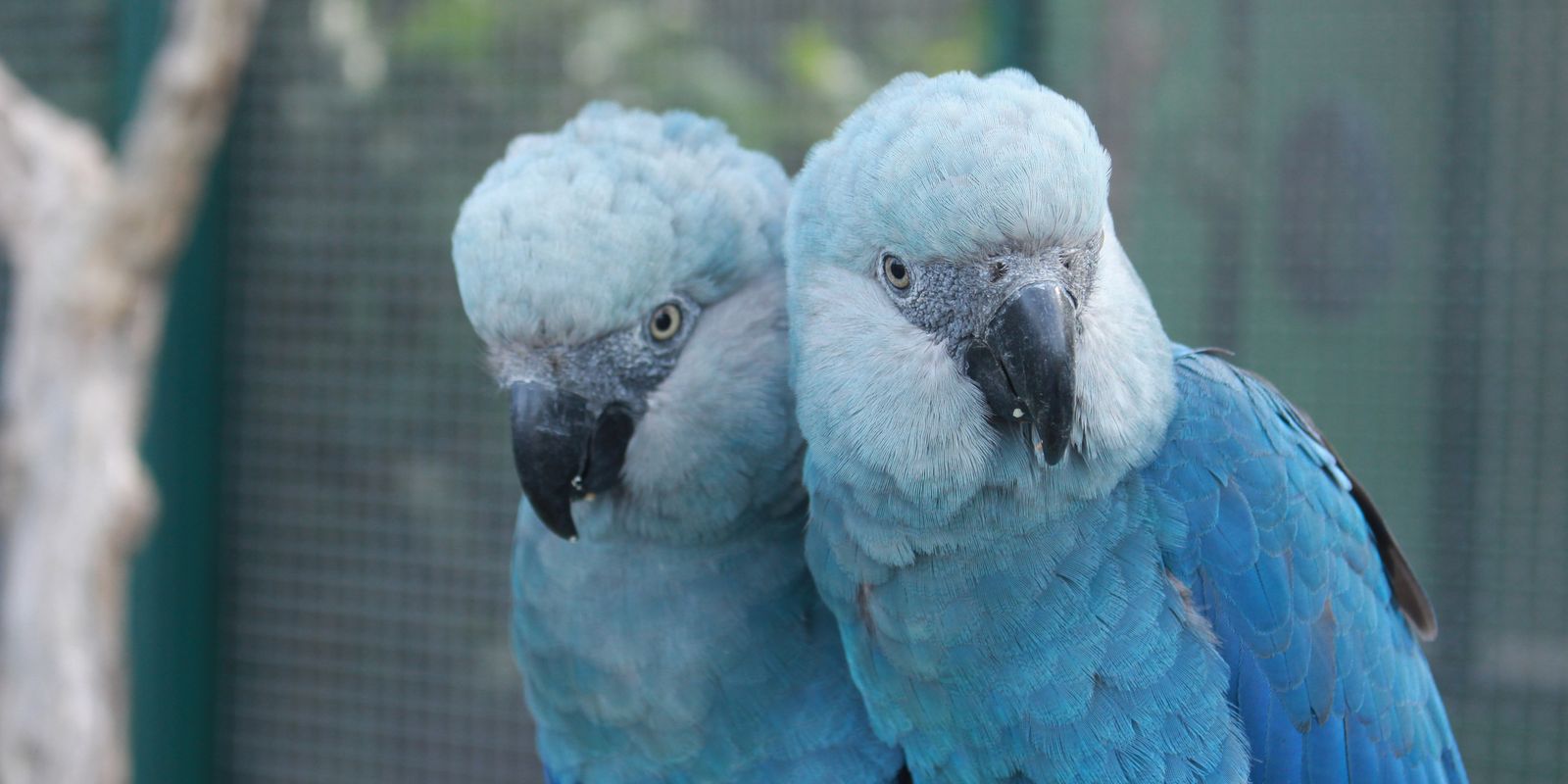Spix’s macaws, birds threatened with extinction according to the Red List of the International Union for Conservation of Nature (IUCN), have had a new space in the visiting area at the São Paulo Zoo since the beginning of this week. The new habitat It measures around 200 square meters and was inspired by the Caatinga Baiana, a region where the last natural nest was seen in a Caraibeira, a species of ipê, in the Melancia stream, in Curaçá.
The Spix’s Macaw is a small species with blue plumage, endemic to the Brazilian caatinga. Currently, there are 334 Spix’s Macaws in the world under care and 85 are in Brazil.
The space was opened after the zoo returned to working with the species at the request of the National Center for Research and Conservation of Wild Birds (Cemave), a specialized body of ICMBio (Chico Mendes Institute for Biodiversity Conservation), of the federal government.
This year, the São Paulo Zoo received 27 animals of this species and created an exclusive conservation center for them. The goal is to reproduce the birds and, in the future, send them back to the wild. These birds can be seen by the public and will also be part of environmental education actions, which serve public school students free of charge.
Privilege
For Neiva Guedes, president of the Instituto Arara Azul, coordinator of the Project Arara Azul and Projeto Aves Urbanas-Araras na Cidade, having a visiting space with the Spix’s macaw is a privilege for the country and for visitors to the Zoo who will be able to have contact with a special animal.
“Brazil is megadiverse and losing its biodiversity is very sad, because they all have a very important relationship in nature. So, the Zoo doesn’t just provide visitors. He comes up with a conservation program to help this animal remain in the wild and even increase in the wild,” he noted.
The biologist explained that Spix’s macaws were discovered late in the 1970s, when a Brazilian government project was created that monitored these animals in the wild between 1990 and 2000, but they disappeared after that.
The period without this species in the wild lasted for 20 years and it was only recently that the bird was returned to the wild. “There are already some pairs reproducing and the Zoo plays a very important role, because we need to increase them so that they remain in the wild. Must have many [desses animais] because they are social birds and need to be in groups, protecting themselves, talking and this will reinforce these future releases into the wild”, said Neiva.
The inauguration ceremony of the new space was attended by Brazilian filmmaker Carlos Saldanha, known worldwide for his work in animated films, such as the titles River and Rio 2in which he was director and which celebrate Brazilian culture and provoke reflections on environmental themes, in addition to making the Spix’s Macaw known around the world.
“It is very exciting to be here at the São Paulo Zoo and witness the inauguration of this enclosure for the Spix’s Macaw. Not just for the blue macaw, but for the other blue macaws here. It’s really cool to see this work with endangered animals, because sometimes, in cinema, we try to create, imitate reality a little, tell things and sometimes cinema becomes reality”, said Saldanha.
He believes it is very important for everyone to get involved in preserving the environment, as climate change and its effects are visible to the world, with humans and animals suffering. “We are the big villains in this story and animals have no voice to deal with all of this, so we have to be aware and responsible for preserving them. In my case, I’m not a biologist, I can’t take care of them, but I’m a filmmaker and cinema has a huge potential for dissemination, spreading stories and inspiring people”, he stated.
rock walls
Two other species of blue macaw can be observed by visitors at the São Paulo Zoo: Lear’s Macaw and the Great Blue Macaw. Endemic to the Caatinga, the Lear’s Macaw also nests and forms collective roosts on rocky walls in the backlands of Bahia. With indigo blue plumage and yellowish details around the eyes, this macaw is known for its diet based on licuri, a palm tree native to the region.
The Lear’s Macaw was once on the brink of extinction due to trafficking and loss of its habitat natural, but, thanks to conservation and reforestation programs, its current population is estimated at around 2,200 birds. The São Paulo Zoo was the first in Latin America to reproduce the species under human care and has already sent five birds to release programs.
The Great Blue Macaw, also known as the Pantanal Hyacinth Macaw, is the largest of the macaw species and stands out for its vibrant blue plumage, with yellow details around the eyes and at the base of the beak. Found mainly in the Brazilian Pantanal, but also in the Amazon and in cerrado areas, this bird can reach up to one meter in length, with a wingspan of up to 1.2 meters. It feeds mainly on palm fruit, such as acuri and bocaiuva, which are essential for its survival.
The São Paulo Zoo is the only one in Latin America where it is possible to discover, during the visit, the three species of hyacinth macaws that exist.
In addition to the inauguration of the new space, a technical cooperation agreement was signed for the benefit of the great blue macaw that inhabits the Pantanal region, hit by major forest fires this year. The agreement – signed with the Arara Azul Institute – provides for technical exchange in the joint execution of activities related to actions to support wildlife victims of fires.

















